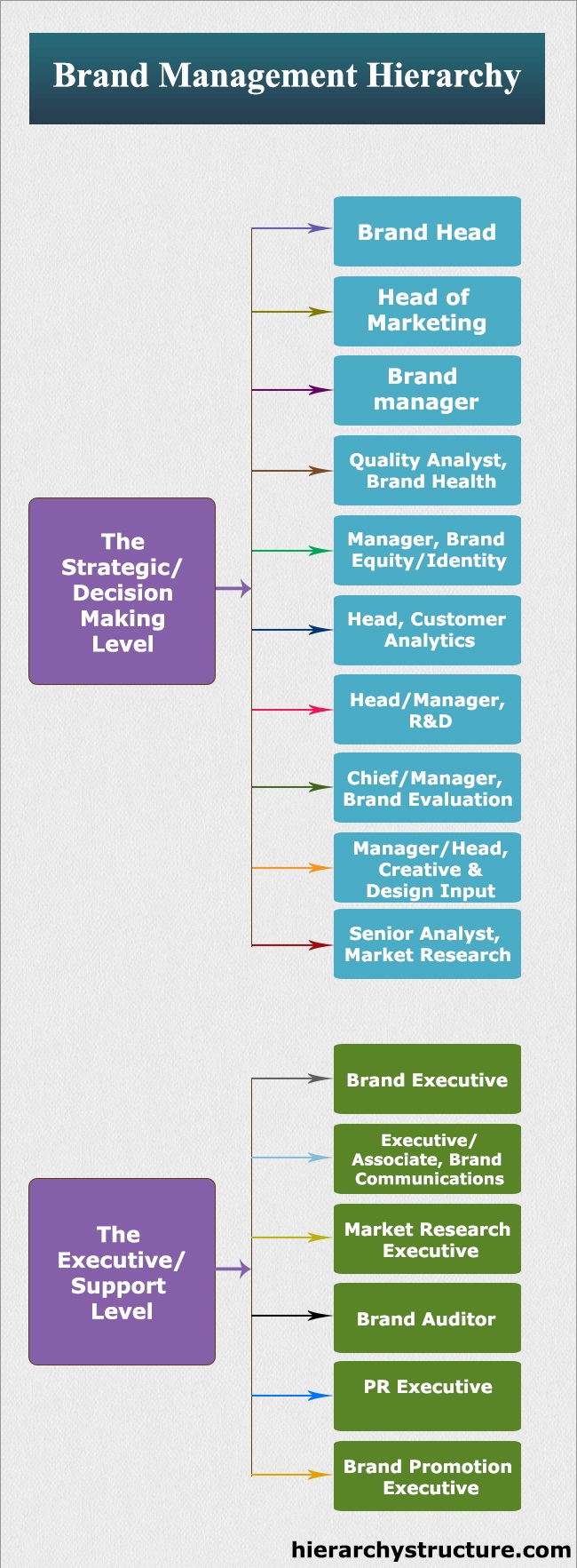A Brand name is an asset attached to any person or product; it is essentially intangible in nature and is supposed to convey certain messages or feelings to the target group of audience. Brand management hierarchy on the other hand is all about treating the performance, the growth and expansion of a brand as a business.
Every brand comes with certain promises which are reflected in the colors used in the logo, the content of a particular text associated with a brand and even in the celebrities whom companies rope in as brand ambassadors. So, when it comes to brand management, the organizational structure aims at ensuring that the brand value is maximized in qualitative as well as quantitative grounds and the brand promise is delivered accordingly.
The brand management hierarchy engages in determining the design of logo and brand image in line with data fished out with the help of market research. This helps in establishing certain points of parity and points of differences which set a brand apart from other competitors and influence the sales, revenue and market share of the company. The hierarchical levels can be classified as follows:
I. The Strategic/Decision Making Level
Thus hierarchy is involved in laying down the strategic foundations of the credo and business philosophy of the company or products based on which the brand image will be constructed. This also includes deciding on the colors, font size and logo design which will actually hit the consumer mind space. The job titles are:
- Brand Head
- Head of Marketing Team
- Brand manager
- Quality Analyst, Brand Health
- Manager, Brand Equity/Identity
- Head, Customer Analytics
- Head/Manager, R&D
- Chief/Manager, Brand Evaluation
- Manager/Head, Creative & Design Input
- Senior Analyst, Market Research
This brand management hierarchy level takes into account customers’ tastes, preferences and attitude towards branding strategies with the help of certain mathematical and statistical tools. Subsequently, the strategies regarding logo design or reinforcing the same are determined and communicated to the lower hierarchies.
II. The Executive/Support Level
This level is primarily engaged in implementation of the branding strategies as directed by the strategic level. The personnel in this hierarchy are also involved in gathering the necessary data and information which help the strategic level to develop strategies and take decisions. The profiles in this level are:
- Brand Executive
- Executive/Associate, Brand Communications
- Market Research Executive
- Brand Auditor
- PR Executive
- Brand Promotion Executive
The personnel hailing from this brand management hierarchy level are involved in ensuring that the brand identity and image is communicated to the target audience in an effective manner. Besides, they also engage in research activities thus helping in gaining insights about customer attitude towards a particular brand.
The brand management hierarchy is concerned with proper designing of the brand image in line with market data and communicating the same to the lower levels for proper dissemination.

